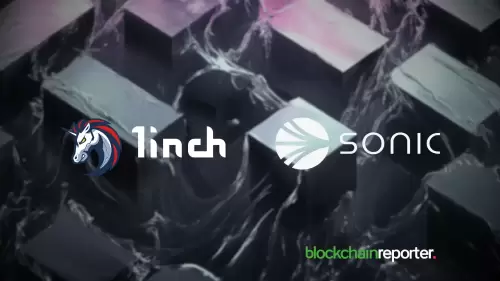 |
|
 |
|
 |
|
 |
|
 |
|
 |
|
 |
|
 |
|
 |
|
 |
|
 |
|
 |
|
 |
|
 |
|
 |
|
Cryptocurrency News Articles
Polygon Price Plunge: Is There a Cryptocurrency Plunge Risk?
Jun 19, 2025 at 12:56 am
Polygon (MATIC) price is down, sparking plunge risk concerns. We delve into the factors driving the decline and whether a recovery is possible.

Yo, crypto fam! Polygon (MATIC) has been taking a beating lately, and folks are starting to sweat about a potential plunge. Let's break down what's happening with the Polygon price, the risks involved, and what it all means for the broader cryptocurrency scene.
Polygon Price: A Deep Dive
Polygon's price has been on a downward spiral, hitting its lowest point since April 21. As the broader crypto sell-off gains momentum, Polygon (POL) dropped to $0.1915, down 32% from its highest point in May and a whopping 74% below its 2024 peak. This crash has slashed its market cap from $5.68 billion to a mere $2 billion today. Ouch!
Why the Plunge? Competition Heats Up
Polygon's underperformance is partly due to increased competition in the Layer-2 sector. Data shows Polygon holds a total value locked (TVL) of $1.17 billion and $2.3 billion in stablecoin supply. Compare that to Base, the Coinbase-backed Layer-2, which boasts $5.14 billion in TVL and $4.16 billion in stablecoins. Even Arbitrum (ARB) is ahead, holding over $3 billion in assets and $3.5 billion in stablecoins. And let's not forget Unichain, launched by Uniswap (UNI), which has quickly amassed $1.12 billion in assets and $316 million in stablecoins.
The zkEVM Shutdown: Another Blow
The Polygon token also took a hit following the shutdown of Polygon zkEVM, which was originally acquired as Hermes for $250 million. The CEO cited delayed technical execution, lack of product-market fit, and overly ambitious goals as the reasons for the decision. Not a good look, folks.
Silver Linings: Network Activity is Up
It's not all doom and gloom, though. Nansen data indicates that Polygon's network activity is actually growing. The number of transactions jumped 33% over the past 30 days to 85.6 million, while active addresses rose 23% to 6.49 million. These numbers are even higher than Ethereum (ETH) in some metrics. Ethereum's active addresses rose by 5.5%, while its transactions rose to over 34 million. So, people are still using Polygon, which is a plus.
Technical Analysis: More Downside Ahead?
Looking at the charts, things aren't too rosy. The POL token peaked at $0.7672 in December and has since plunged below the 23.6% Fibonacci retracement level at $0.2950. It's also fallen below its 50-day moving average, and both the MACD and Relative Strength Index are declining. Technical analysis suggests the token will likely continue dropping, with sellers targeting the year-to-date low of $0.1487—around 26% below the current level. A move above the 50% retracement level at $0.2195 would invalidate this bearish outlook.
The Meme Coin Mania: A Distraction?
While Polygon is battling its issues, the meme coin market continues to buzz. Dogewifhat (WIF) on Solana has seen decreasing daily performance, while newcomers like Little Pepe ($LILPEPE) are gaining traction with their Layer 2 solutions and presales. While meme coins can be fun, they often distract from the serious developments in the crypto space.
Final Thoughts: Is Polygon a Buy or a Bail?
So, what's the verdict? Polygon is facing some serious headwinds, but it's not dead yet. The increased network activity is a positive sign, but the competition in the Layer-2 space and the zkEVM shutdown are weighing it down. Whether it's a buying opportunity depends on your risk tolerance and belief in Polygon's long-term potential.
In the meantime, keep an eye on those charts, stay informed, and don't bet the farm on any single crypto. After all, in the wild world of crypto, anything can happen!
Disclaimer:info@kdj.com
The information provided is not trading advice. kdj.com does not assume any responsibility for any investments made based on the information provided in this article. Cryptocurrencies are highly volatile and it is highly recommended that you invest with caution after thorough research!
If you believe that the content used on this website infringes your copyright, please contact us immediately (info@kdj.com) and we will delete it promptly.
-

-

-

- Sonic Execution: 1inch Supercharges DeFi with Lightning-Fast, Industry-Leading Rates on Sonic
- Jun 19, 2025 at 10:25 pm
- 1inch integrates with Sonic, bringing lightning-fast transactions and industry-leading rates to DeFi. Explore seamless, affordable trading with enhanced liquidity and developer tools.
-

-

-

-

-

-






























































